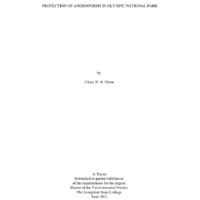USING RARITY AND EVOLUTIONARY DISTINCTIVENESS TO PRIORITIZE PROTECTION OF ANGIOSPERMS IN OLYMPIC NATIONAL PARK
Item
- Title (dcterms:title)
- Eng USING RARITY AND EVOLUTIONARY DISTINCTIVENESS TO PRIORITIZE PROTECTION OF ANGIOSPERMS IN OLYMPIC NATIONAL PARK
- Date (dcterms:date)
- Eng 2021
- Creator (dcterms:creator)
- Eng Olson, Claire
- Identifier (dcterms:identifier)
- Eng Thesis_MES_2021_OlsonC
